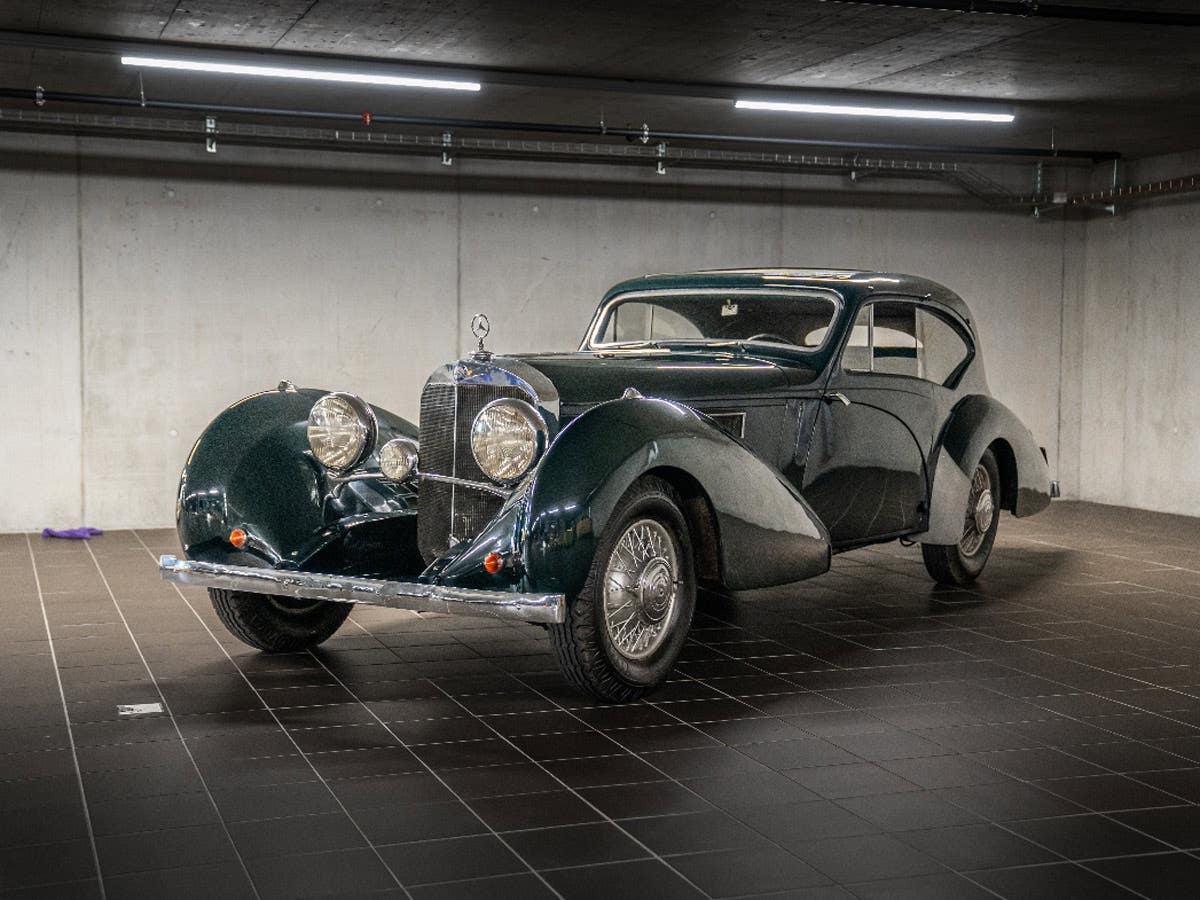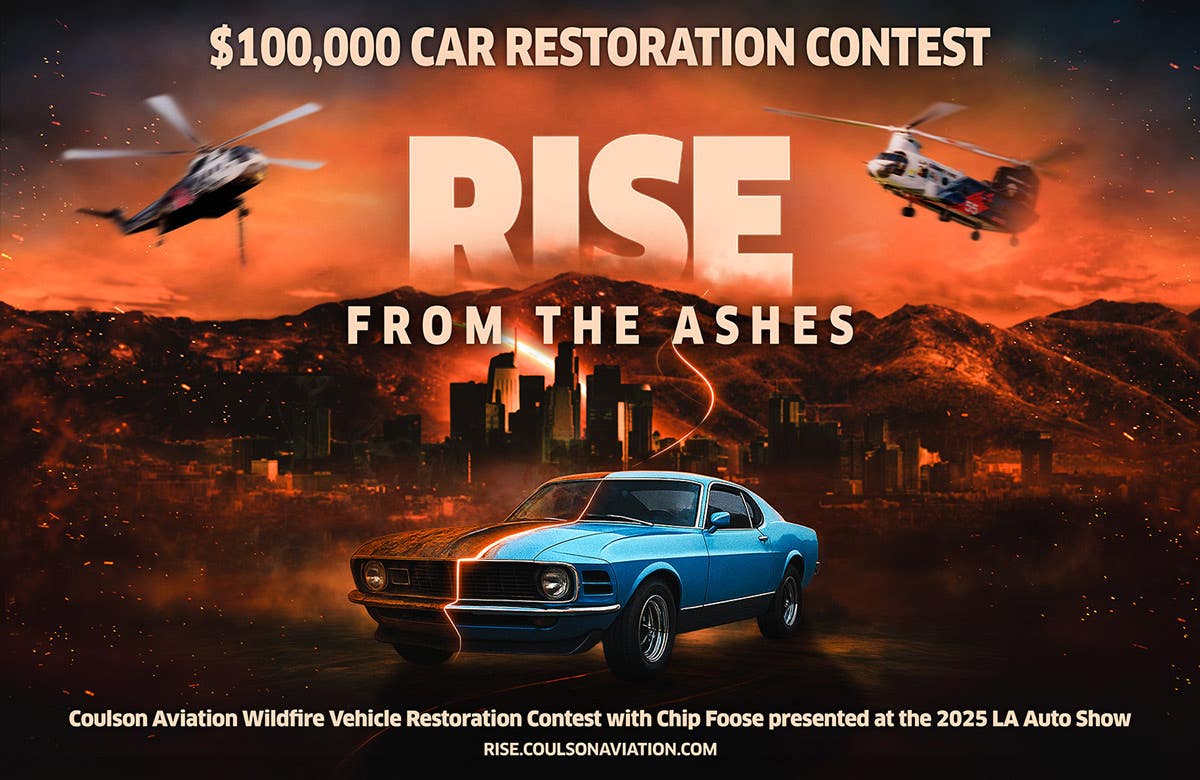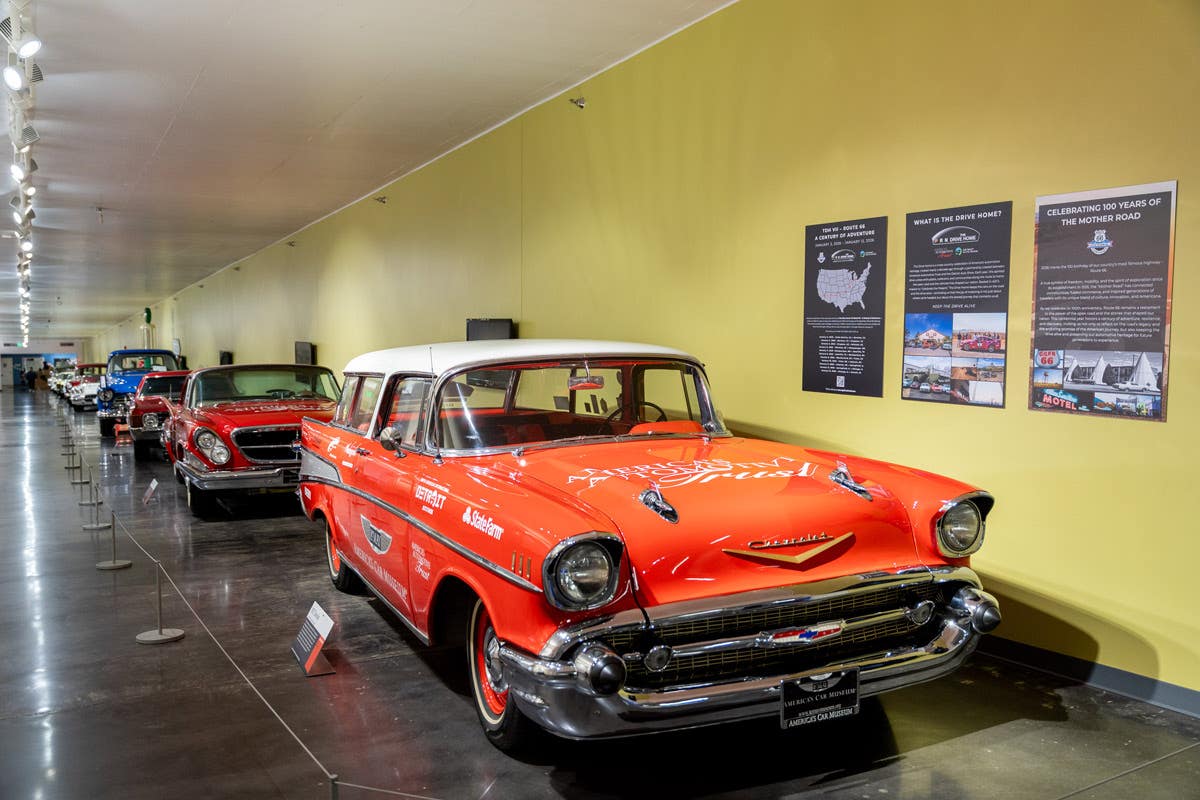Gilmore Car Museum: Shaping steel, shaping lives
Pilot project trains high school students in auto restoration.
(From front row left) Students Dustin Moore, Jacob Miller, William
Boyd, Codee Wolfe, and Mason Leonard in front of the 1931 Willys-
Knight chassis ready for restoration, with (from back row left)
Mentors Doug McFarlen, Doug VanderLaan, Jane Lyon, Bernie
Kuiper, Phil Renuart, Bob Johnston, Tim Morris and Michael Spezia
looking on. (Photo Credit: David Lyon / Gilmore Car Museum)
Eight seniors from nearby high schools were selected to be part of the first after-school Gilmore Garage Works project, with classes on automotive preservation, conservation and restoration.
Adult mentors are primarily museum members with long histories in the auto restoration hobby. A 1931 Willys-Knight donated to the museum in 2005 is being used as the first restoration project.
Students and their adult mentors, primarily Museum members with long histories in the auto restoration hobby, will use a 1931 Willys-Knight donated to the Museum in 2005 as their first restoration project.
Students will receive exposure to such skills as welding, painting, and metal fabrication as part of the class using tools and equipment that have either been donated to the program or purchased by the not-for-profit Gilmore Car Museum at a reduced cost. Work will begin in one bay of the Museum’s current Machine Shop and will move in December to a new 6,400 square-foot restoration shop and dedicated educational facility currently being constructed at the Museum.
“Our intent is not to turn out welders, painters, or restoration professionals in one after-school class,” states Michael Spezia, executive director of the Gilmore Car Museum, “but rather to introduce a student to a unique environment and give them exposure to hands-on experiences that we hope will motivate them to pursue further education, training, and a career.”
“Just as important are the life skills these kids may learn from their mentors – skills like how important it is to be on time, to be prepared for a job each day, and how to take pride in the work that you do. Those skills will be the longer-lasting benefits to this program.”
One skill students are already developing is the presentation of their work in a personal portfolio that will be useful in a job search. In addition to work gloves, safety glasses, and a shop uniform, students also received a disposable camera and a binder for documentation of their time in the program. The class begins each two-hour session with a 10-minute planning period and a similar 10-minute wrap up in which students will maintain a journal about their day’s experience.
“Students are going to learn more that just how to preserve and conserve automotive history,” says mentor Dan Livingston. “They are going to create a portfolio of knowledge that they’ve gained from this program that they can showcase to future employers. That’s something that employers have come to expect – and our kids are going to be ready.”
The Gilmore Garage Works program is a case study in collaboration and commitment between several individuals and agencies within a community.
Donors Larry and Earlene Baum of Hastings provided the impetus, providing a gift for a new building that reflected the couple’s commitment to providing an educational opportunity for young people through the automotive hobby.
Museum staff developed this program with the help of the Barry Intermediate School District which provided guidance on curriculum and administrative issues. The area’s Michigan Works! office assisted with identification and screening of students as well as financial support. The Barry County Community Foundation provided transportation for the pickup of all students at their respective high schools and a return at the end of each day. Following the Gilmore Car Museum’s first class an anonymous donor stepped forward and has paid all student transportation cost for the next three years.
Officials expect that Gilmore Garage Works and its pilot high school class could be a model for similar programs nationwide, especially as it continues to roll out the next two steps in its three-phased educational outreach program.
The Gilmore Car Museum is already making preparations to qualify for classroom accreditation in which future students can earn high school and college credit through course work at the Museum’s machine shop. Affiliation with nearby Kellogg Community College is being considered as a possibility as well as mapping career paths to direct employment or a four-year college program.
The third part of the Gilmore Garage Works program outreach will be an adult education series of courses in which interested hobbyists will enroll and support specialized classes in automotive restoration such as upholstery, welding, and painting.
“Education is integral to the mission of the Gilmore Car Museum,” says Spezia. “We are excited with this new endeavor because it gives the Museum the opportunity to partner with the community – and it allows the community to become more involved the Museum.”
The pilot program for high school students began on October 6th and is a first for the Museum, which opened in 1966 and has long been regarded as one of the top car museums in the nation.
When asked how to measure the program’s future success, Doug VanderLaan, director of development at the museum, explained that its greatest achievement has already been met—the opportunity it affords students.
“I don’t think there’s a stronger payoff than the knowing you’ve made a difference in a kid’s life,” he said.
MORE RESOURCES FOR CAR COLLECTORS FROM OLDCARSWEEKLY.COM








